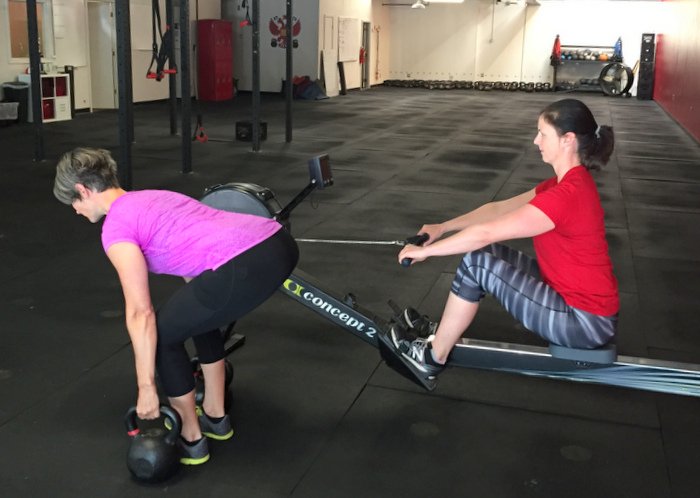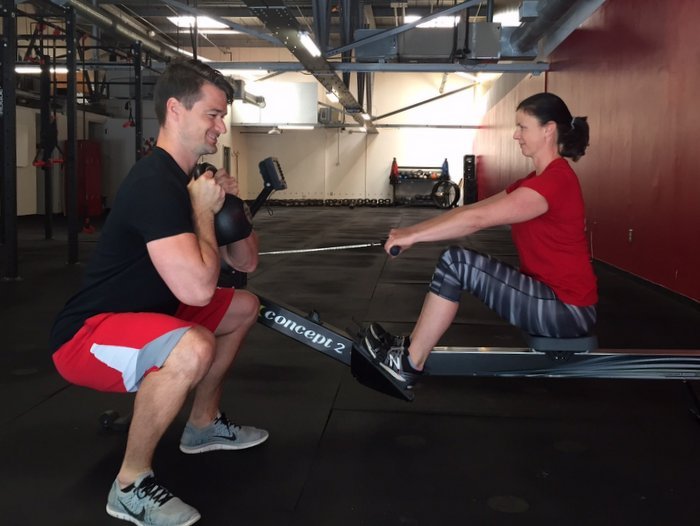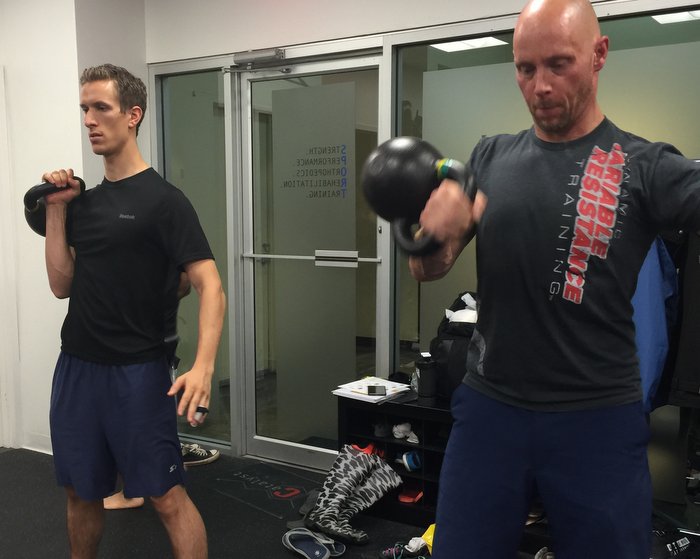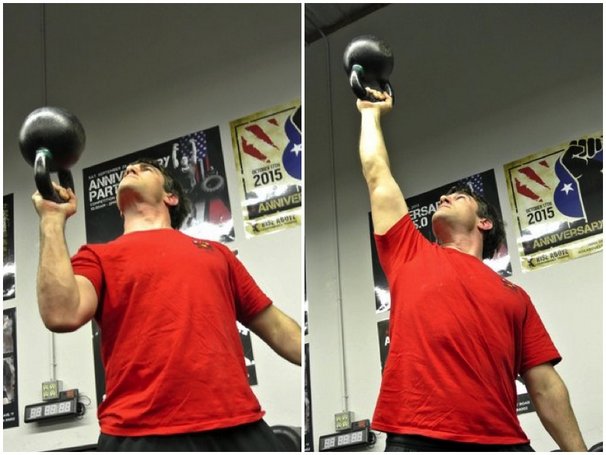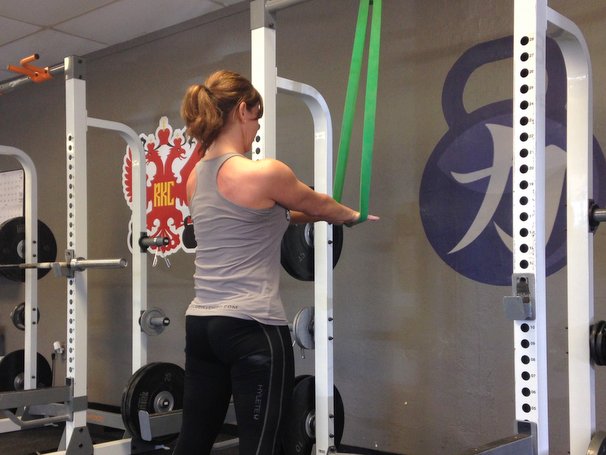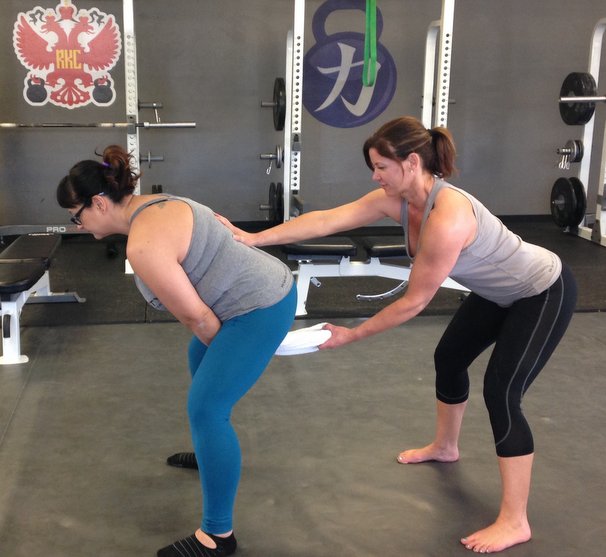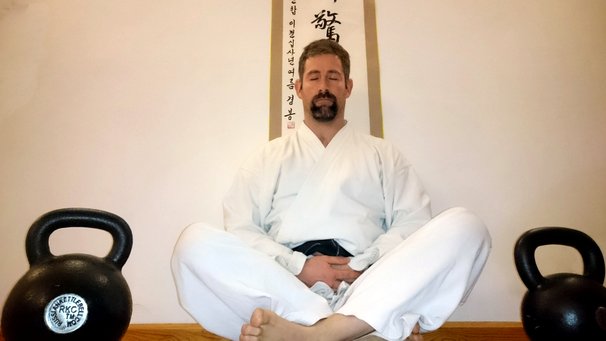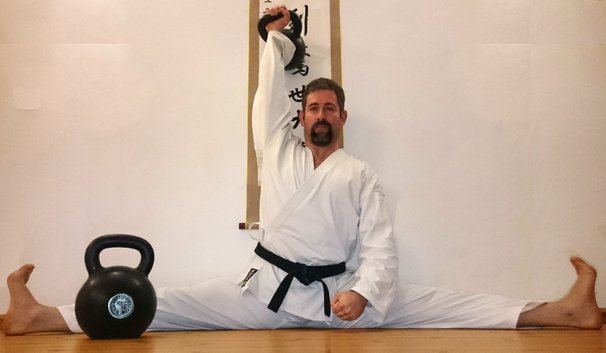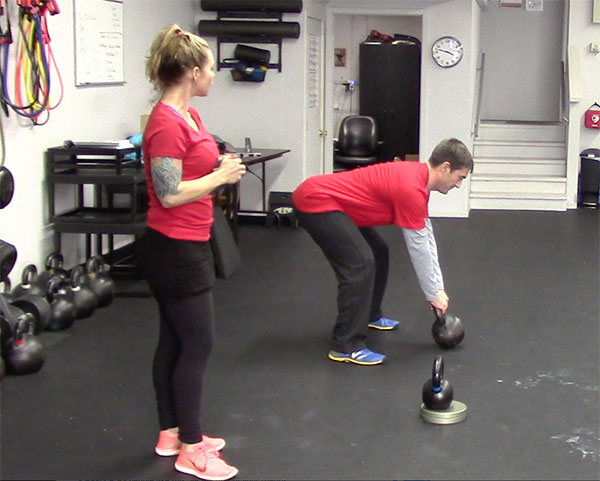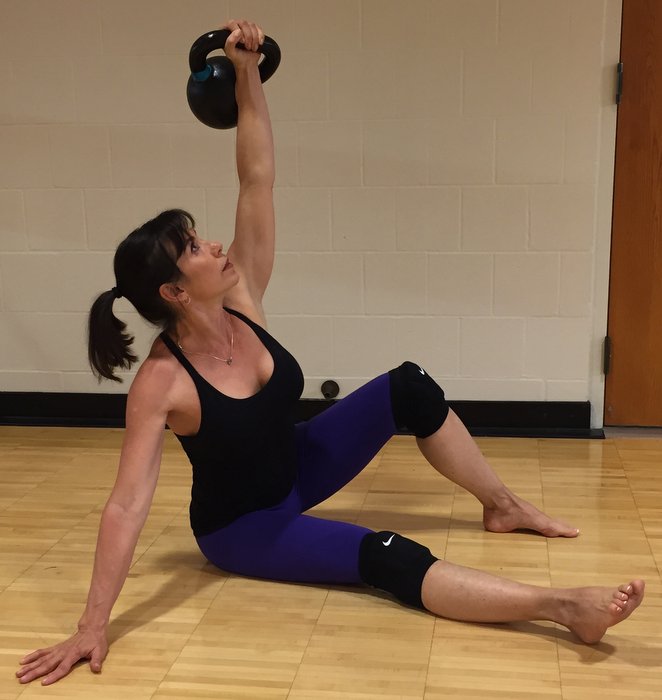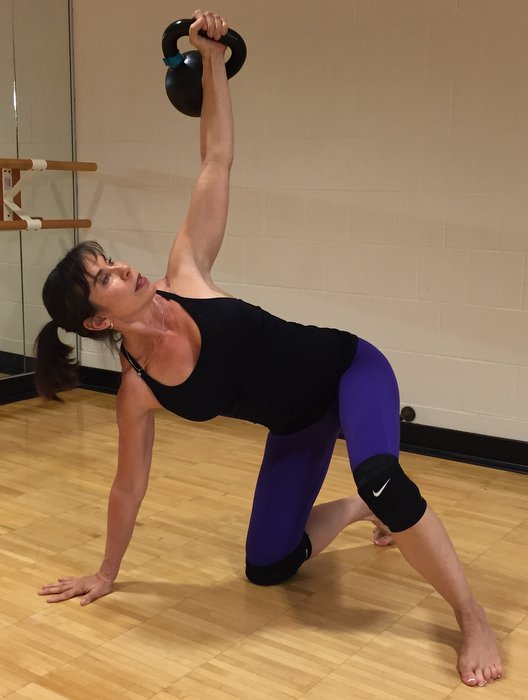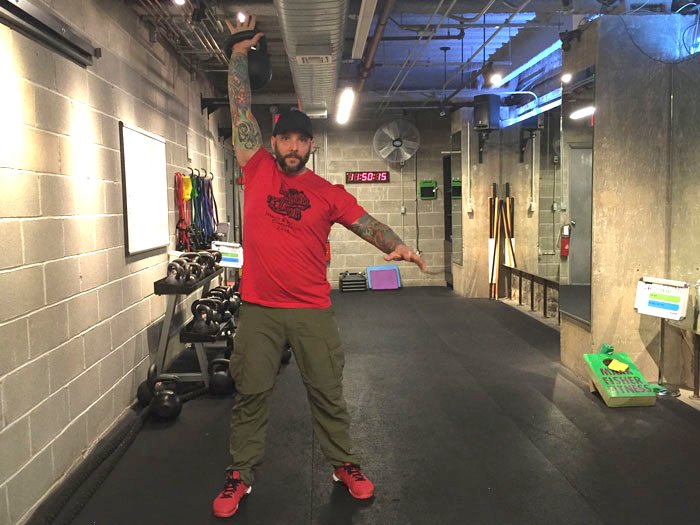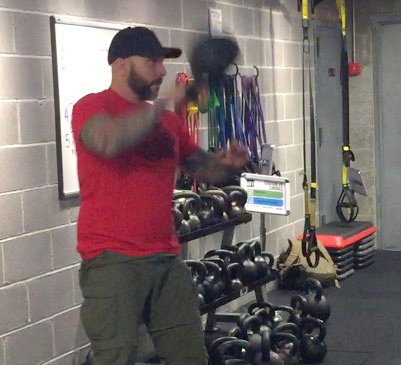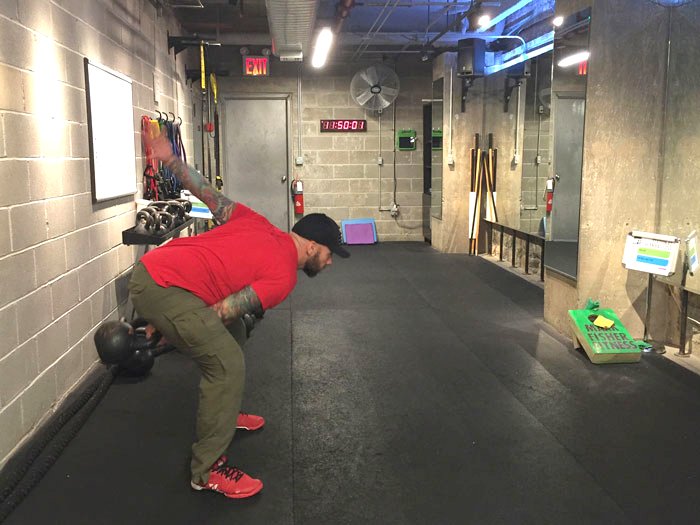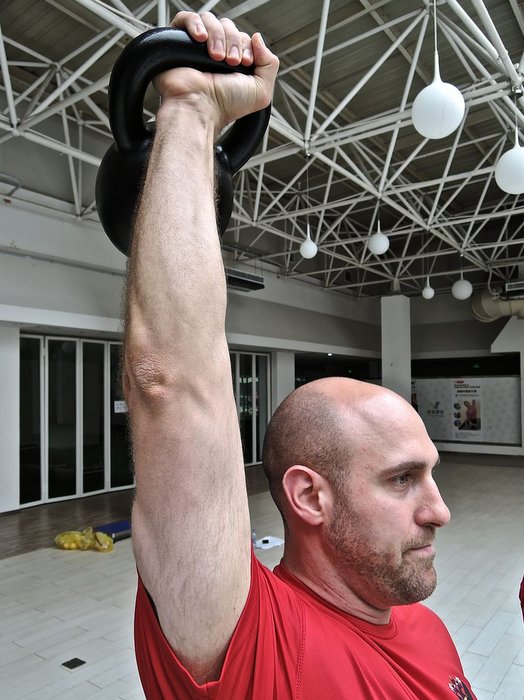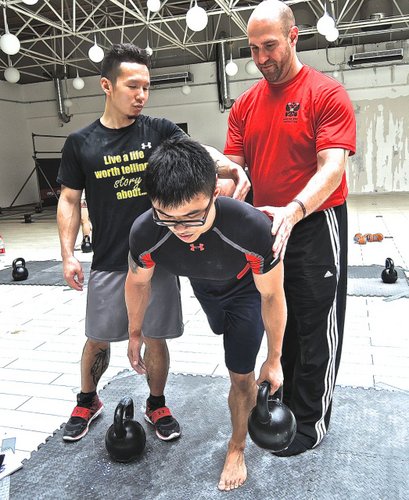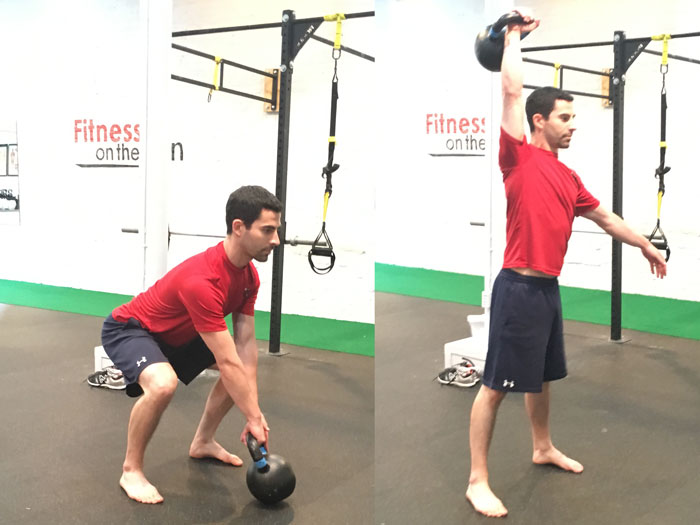
At first, the kettlebell snatch exercise can be daunting to learn. However, if you have a solid one-arm swing and are able to keep a kettlebell locked out overhead from a press or a get-up, then the snatch is definitely within your capabilities.
One of the most common mistakes that I’ve seen when teaching someone to snatch is not letting the elbow bend on the way up. This lack of elbow-bend will create a large arc for the kettlebell to travel—far away from the body—before landing overhead. That landing will be very jarring to the shoulder since the energy of the kettlebell will directed back behind you after traveling a large arc. Ideally, you want the energy of the kettlebell to travel a path nearly parallel to the body, then down when the kettlebell lands overhead. This path can only happen when we bend the elbow and keep the arc of the kettlebell fairly close to the body.
To teach my clients how to bend their elbow when snatching, I have them snatch a light kettlebell from the ground without using a backswing as a teaching drill. Start with the light kettlebell positioned between your feet so that it stays close to your body on the way up. From this position, explosively snap your hips forward while pulling the kettlebell straight up along your body. Punch your hand through the handle to finish in an overhead locked out position just like a standard snatch. This drill should be one smooth movement and not a clean and press.
After a few successful reps of this drill, go back to the standard RKC snatch to see how it feels. Hopefully, this will help smooth out your kettlebell snatch and make it much more comfortable on your shoulder.
Stay Strong,
Ryan Jankowitz
****
Ryan Jankowitz, RKC-II Instructor, CK-FMS, is a life-long athlete who can’t imagine sitting behind a desk. He enjoys sharing his passion for fitness and spreading the RKC knowledge. Ryan operates an online fitness coaching service and is available for private kettlebell workshops as well. You can reach him at ryan@rjkettlebell.com or through his website rjkettlebell.com. He also works with clients and teaches kettlebell classes at Fitness on the Run in Alexandria, Virginia. If you’re in the area, visit fitnessontherun.net and come swing some bells with Ryan.
